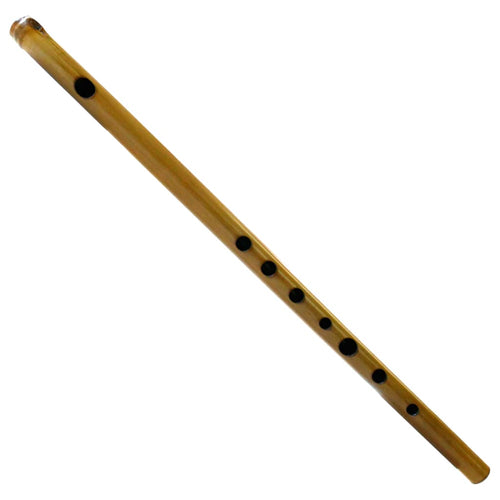

Shinobue Rippei Fukiurushi Sugatakan
- ¥56100JPY
- ¥56100JPY
Rippei 7 hon choshi (tuned in B)
Shinobue Rippei
What is "Shinobue Rippei" loved by professional shinobue players?
Rippei is one of the foremost shinobue craftsmen in Japan and his shinobue has both of beauty looks like craft and accurate tuning. There are various designs with traditional Japanese pattern and modern design. Various professional shinobue players play his shinobue.
Feature of Shinobue (Tuning, Playing Feeling, and Painting)
It is easy to play with western instruments such as the piano or guitar as it is strictly tuned to the standard key of A=442 Hz. and with the 2 octave adjusted. The interior of the flute is designed unevenly on purpose to produce a low rich sound. Rippei intentionally put an uneven interior into the tubes to accordingly fit the bamboo's structure. This produces an effect of a variety of multiple sounds. Therefore, one will realize that there is no conventional flute that can produce a similar sound to it. For nuribue (painted shinobue) crafted by Rippei, the body is coated with paint and the condition of the bamboo cannot be altered easily. The sound remains in good condition because of this coating. Further, the flute with such coating can stand climate changes and has durability.
Natural Finished Shinobue With Urushi Coating
Fukiurushi
Fukiurushi is one of urushi lacquering techniques. To rub transparent urushi lacquer in the surface of shinobue and wipe off (fuku in Japanese) it over and over, the beautiful grain of bamboo becomes more beauriful. It is also called suriurushi because makers rub urushi in the bamboo (urushi wo take ni surikomu in Japanese). Unlike gorgeous nuribue, it looks simple and natural appearance of bamboo shinobue. As to the sounds produced, fukiurushi makes sounds of natural bamboo from inside the tube without making sounds indistinct.
- Contents: Shinobue + Soft Case (Option)
- Order Processing Time: About 30-120 Business Days
Type:
- Sugatakan
Key:
- 1 hon choshi (F) / 2 hon choshi (G flat) / 3 hon choshi (G) / 4 hon choshi (A flat) / 5 hon choshi (A) / 6 hon choshi (B flat) / 7 hon choshi (B) / 8 hon choshi (C) / 9 hon choshi (D flat) / 10 hon choshi (D) / 11 hon choshi (E flat) / 12 hon choshi (E)
-
Share -
Tweet -
Pin it